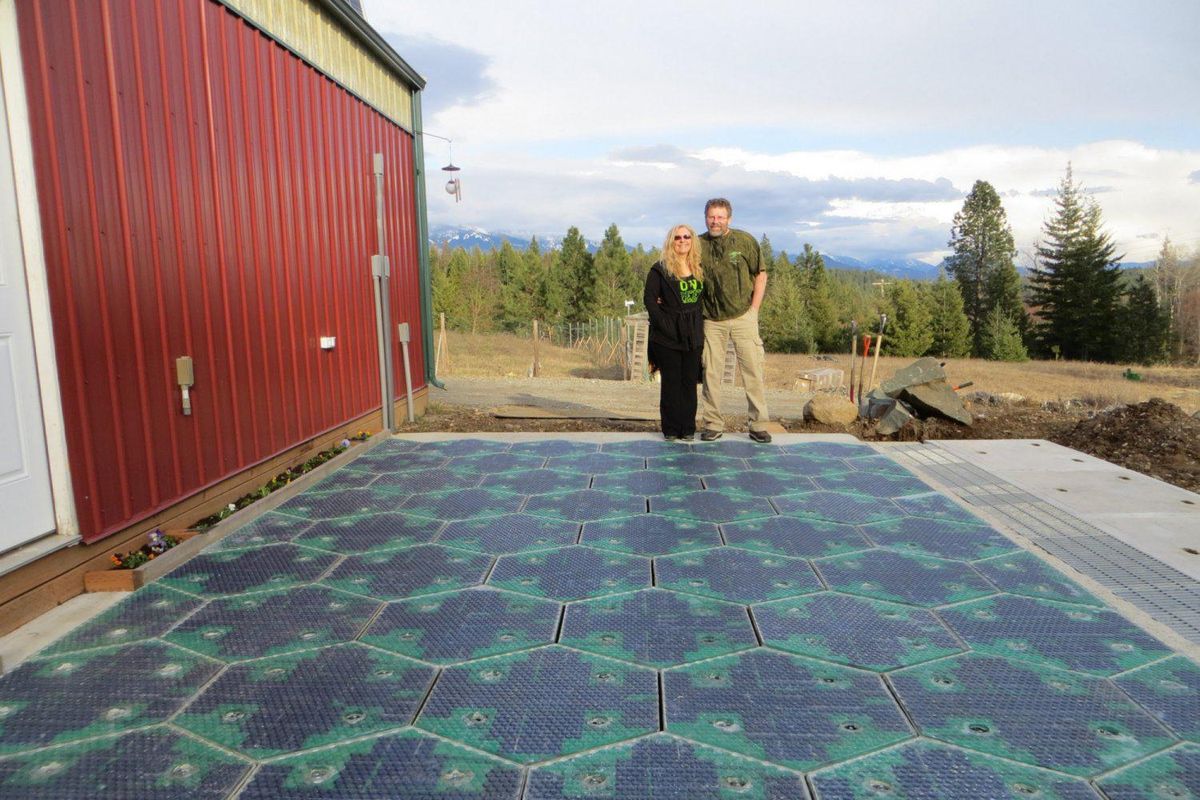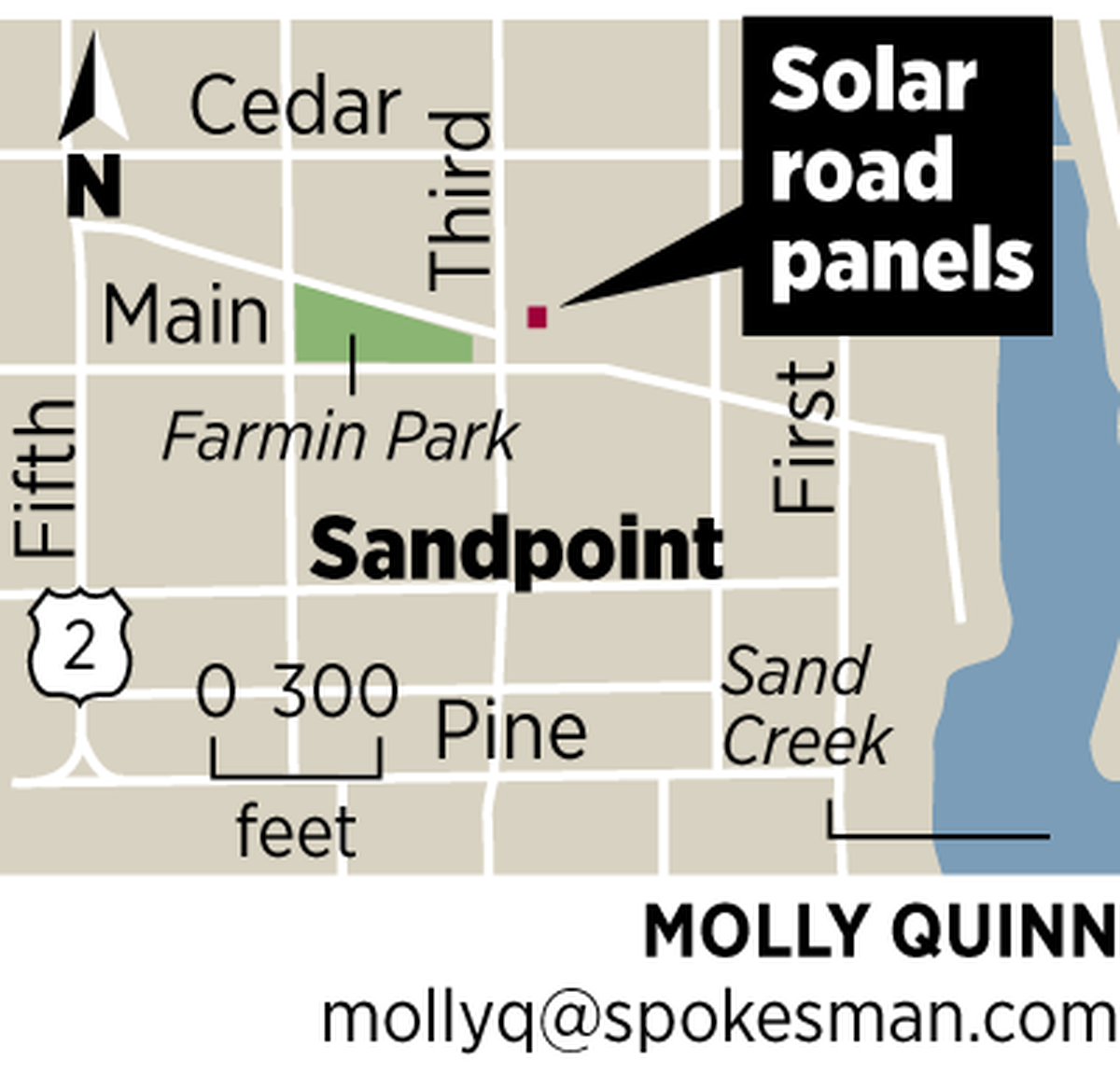Sandpoint wins grant to put in Solar Roadways demo
Solar Roadways co-founders Julie & Scott Brusaw stand by a demonstration pad of their solar roadway tiles, which could melt off snow and produce electricity if used in parking lots and roads. (Courtesy Solar Roadways)
The city of Sandpoint will start work soon on the first public pilot project with Solar Roadways Inc., the North Idaho startup that aims to transform roads, sidewalks and parking lots into heavy-duty solar surfaces capable of generating power and melting ice.
The city has received a $48,734 Idaho Gem Grant from the state Department of Commerce to install a 150-square-foot solar surface at Jeff Jones Town Square at Third Avenue and Main Street in downtown Sandpoint.
The Sandpoint Urban Renewal Agency is kicking in another $10,000 for the project, and Solar Roadways owners Scott and Julie Brusaw, of Sagle, will donate installation costs.
The solar surface will go down in June, according to the city’s project schedule.
“In addition to the potential for long-term economic development, this project will draw many visitors, locally, regionally, national and worldwide to view the project … drawing much needed tourism to other downtown businesses,” said Aaron Qualls, the city’s Planning and Economic Development director, in a March 29 letter to the urban renewal board.
The company also will benefit from the attention the pilot project is expected to attract, Scott Brusaw told city officials. “This will help lead to the building of a mass manufacturing facility in Idaho, where even more jobs will be created,” Brusaw said in a March 17 letter.
Solar Roadways also met this spring with officials at the University of Idaho to discuss a similar demonstration project on the Moscow campus. The university has applied for a grant from Avista Utilities to pursue that project. A location has not been selected.
The company raised over $2.26 million from the public in an Indiegogo crowdfunding campaign and has used some of the money to hire employees and open an engineering and manufacturing shop at 721 Pine St. in Sandpoint.
The Brusaws believe their technology can transform U.S. highways and cityscapes into sprawling networks of energy generation and provide surfaces that are durable, safe and less expensive to maintain than concrete and asphalt.
The hexagon-shaped, inch-thick panels collect solar energy that can power heaters and lights under the glass, with electricity to spare. The Brusaws built a small parking pad next to their workshop using 108 of the panels, and it stayed free of snow and ice through the winter.
The panels also feature LED lights that can illuminate road lines and project warning signs onto a surface. In another application, electric vehicles would be able to recharge at rest stops, restaurants and other businesses that incorporate the solar road panels into their parking lots.

